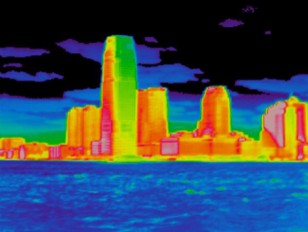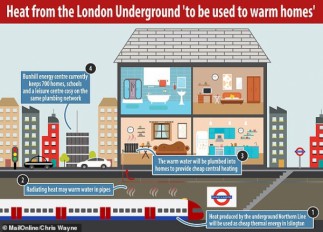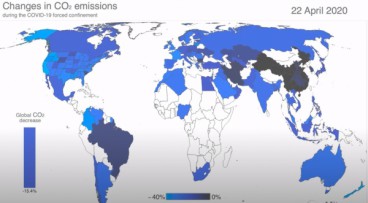The majority of world population could face deadly heat waves by 2100

Up to 75% of people could be exposed to extreme heat conditions
Up to 75% of people could be exposed to extreme heat conditions
Unless carbon emissions decrease rapidly, the three-quarters of world population could face deadly heat waves by the end of the century. This is the conclusion of a scientific study, which should be taken as a warning sign from governments and policy makers. Even if the world drastically reduces emissions though, still almost half the world’s population (48%) will eventually be exposed to extreme heat conditions. For the study’s author Camilo Mora from the University of Hawaii, it is still a human’s choice whether our future will be ‘bad or terrible’, as the impacts of warming could be reduced significantly. According to the study, published in the journal Nature Climate Change, the greatest risk to human life from heatwaves will be in the tropics, almost throughout the year, while in larger latitudes, this risk will be limited to the summers.
The method followed
The researchers conducted a global analysis of documented lethal heat events to identify the climatic conditions associated with human death and then quantified the current and projected occurrence of such deadly climatic conditions worldwide. They found 1,900 locations where, after 1980, climatic conditions had caused lethal heat events. Analyzing these conditions for the 783 most lethal heat events from 164 cities in 36 countries, they identified a global threshold beyond which daily mean surface air temperature and relative humidity become deadly.
Around 30% of the world’s population is currently exposed to climatic conditions exceeding this deadly threshold for at least 20 days a year. By 2100, this percentage is projected to increase to ∼48% under a scenario with drastic reductions of greenhouse gas emissions and ∼74% under a scenario of growing emissions. An increasing threat to human life from excess heat now seems almost inevitable, but will be greatly aggravated if greenhouse gases are not considerably reduced.
The research team created an online application which can, for any place on Earth, calculate the number of days in the year that temperature and humidity are estimated to exceed the lethal threshold. For example, by 2100, New York is expected to have about 50 days a year with climatic conditions above the threshold, Sydney 20, LA 30, but in Orlando Florida and Houston, Texas, all summer days will be above the threshold.
Examples of lethal heat events
The threat to human life from excess heat seems almost inevitable. In 1995, 700 people died in Chicago because of the extreme heat. In 2003, heat waves in Europe cost the life of more than 70,000 people, while in 2010, 10,000 deaths from the same cause were reported in Moscow. Cities like New York, Washington, Los Angeles, Toronto, London, Beijing, Tokyo, Sydney, Sao Paolo and others have faced deadly heat waves as well.
Source: National Geographic
Source: National Geographic
Want to read more like this story?

The 'urban heat island' effect could force several major cities to face climate change costs at least twice as big as the rest of the world
Oct, 10, 2017 | NewsSome of the world’s largest cities could face temperatures up to 8°C higher than those of...

Heat produced by an underground line to warm houses in London
Sep, 05, 2019 | NewsA brand-new innovative plan suggests utilizing heat produced by an underground line to warm houses d...

€1 billion to be invested in European heat pump production by Bosch
Apr, 20, 2023 | NewsHeat pumps are expected to play a significant role in Europe’s means of achieving its net zero goal...

This new, energy-optimized school building utilizes solar and near-surface geothermal energy
Oct, 02, 2017 | NewsDuring its first year of operation, the heat pumps have contributed their planned share to the heat...

Cities to live in to escape climate change
Nov, 11, 2016 | NewsA list of the most climate change-adaptive cities in North America A list of the most climate cha...

UK plans to use old coal mines to heat houses
Jul, 07, 2021 | NewsExperts in the UK consider an innovative idea that involves heating houses via abandoned coal mines....

Satellites can help detect geothermal energy under our cities
Feb, 29, 2016 | NewsLinking Surface Urban Heat Islands with Groundwater Temperatures Linking Surface Urban Heat Islan...

17% carbon emissions reduction during COVID-19 lockdown
May, 19, 2020 | NewsAccording to a new study, global carbon emissions have been reduced by 17% during the lockdown follo...

How to reduce temperature in urban environments
Jul, 29, 2019 | NewsA new study conducted by the Portland State examines how vegetation and reflective materials can low...
Trending

Vertical gardens in Mexico City to combat pollution

Saudi Park Closed After 360 Big Pendulum Ride Crashes to Ground, 23 injured

Characteristics of Load Bearing Masonry Construction

Taipei 101’s impressive tuned mass damper

Dutch greenhouses have revolutionized modern farming

Federal court rules Biden’s offshore drilling ban unlawful


